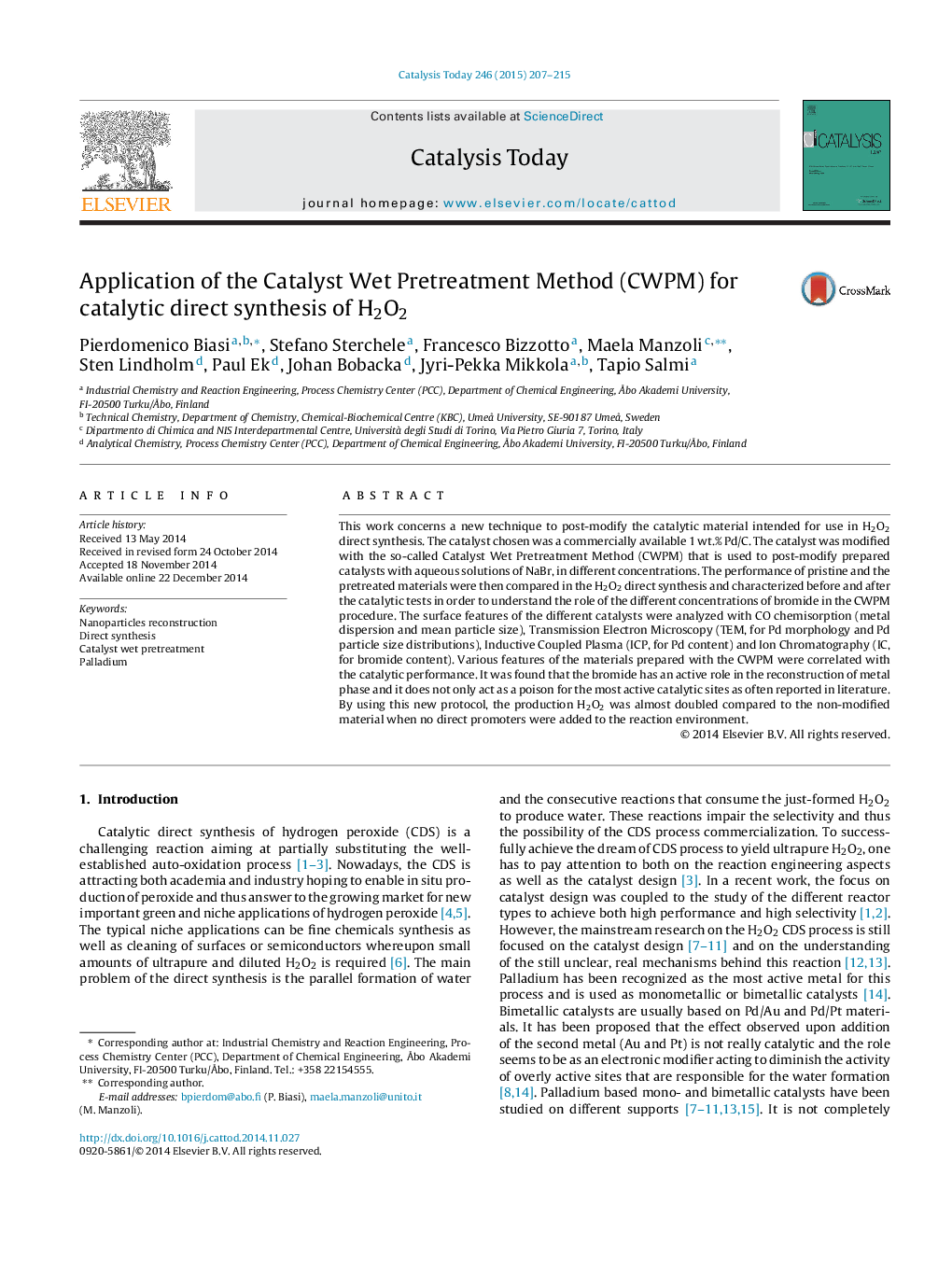| Article ID | Journal | Published Year | Pages | File Type |
|---|---|---|---|---|
| 54233 | Catalysis Today | 2015 | 9 Pages |
•A new procedure called Catalyst Wet Pretreatment Method (CWPM) was used to modify catalysts properties in wet condition.•The use of NaBr to pretreat the catalysts before the direct synthesis leads to metal nanoparticles reconstruction.•Bromide is not only a selective poison for the active sites responsible for H2 combustion or H2O2 hydrogenation.
This work concerns a new technique to post-modify the catalytic material intended for use in H2O2 direct synthesis. The catalyst chosen was a commercially available 1 wt.% Pd/C. The catalyst was modified with the so-called Catalyst Wet Pretreatment Method (CWPM) that is used to post-modify prepared catalysts with aqueous solutions of NaBr, in different concentrations. The performance of pristine and the pretreated materials were then compared in the H2O2 direct synthesis and characterized before and after the catalytic tests in order to understand the role of the different concentrations of bromide in the CWPM procedure. The surface features of the different catalysts were analyzed with CO chemisorption (metal dispersion and mean particle size), Transmission Electron Microscopy (TEM, for Pd morphology and Pd particle size distributions), Inductive Coupled Plasma (ICP, for Pd content) and Ion Chromatography (IC, for bromide content). Various features of the materials prepared with the CWPM were correlated with the catalytic performance. It was found that the bromide has an active role in the reconstruction of metal phase and it does not only act as a poison for the most active catalytic sites as often reported in literature. By using this new protocol, the production H2O2 was almost doubled compared to the non-modified material when no direct promoters were added to the reaction environment.
Graphical abstractFigure optionsDownload full-size imageDownload high-quality image (121 K)Download as PowerPoint slide
